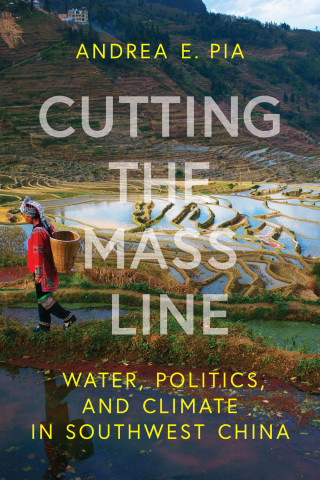
Reviews
[T]he book nourishes our understanding of how people live in a world of nature, scarcity, regulation and getting by.
This thought-provoking book significantly advances critical water studies by interrogating the techno-politics and counter-practices that have replaced, integrated with, and disrupted state's imaginative sustainable planning in the Chinese context.
[A] nuanced and ethnographically rich account of China's history and the maintenance of hydraulic infrastructure.
This impressively rich, imaginative, and theoretically sophisticated monograph is suitable for anthropologists and other academics, policymakers confronting water scarcity and climate change, and anyone interested in creative grassroots resistance. Its deep references to relevant scholarship, mix of theory and narrative, and high ethical standards should be a model for doctoral students working to give voice to marginalized vulnerable communities.
Tracing the emergence of political subjectivities among rural communities in China, Pia shows that water governance is never simply about the natural resource but rather is produced by an assemblage of technopolitical ecologies, imaginaries, and forms of self-organization that fuel the struggle for sustainability, collectivity, and justice. An original, sophisticated, and well-researched book.
Pia's brilliant ethnography demonstrates that China's water-stressed rural communities and their bureaucrats, living with the violence of market sustainability's technofixes, are also sites of prefigurative politics. Cutting the Mass Line is at once deeply grounded and a tour de force through its questions of justice, redistribution, and commoning, offering a searing critique of sustainability's exclusionary temporality.
This scholarly, conceptually compelling, and often delightfully written ethnography of the complex relationships and politico-ethical struggles oriented to promote—and sometimes hinder—different modalities of collective living, enjoyment, and plenitude gives us an inspiring example of what collaborative, caring, and long-term fieldwork can offer: to anthropology, to China studies, and to the imaginations of radical environmental activism across the globe.
Cutting the Mass Line ingeniously conceptualizes water politics as turbulence, infiltration, and diversion. It dwells in collective action at the margins and shows how tenacity and trickiness are what enable life within adversity. This beautiful book gifts us an idea of subversive political practice that might be exactly what we need for the urgency of the now.
A rich, kaleidoscopic ethnography of creative, playful, and shrewd practices of rural commoning to reproduce bodies and ecosystems, bend hierarchies, and live with dignity despite agribusiness and Chinese capitalist water extractivism. Reveals a pulsing social life of care and struggle in the everyday life of subjects and communities who cannot be reduced to victims. Refreshing and eye opening!
Book Details
Preface
Acknowledgments
Introduction
Chapter 1. Timelines
Chapter 2. Gridlines
Chapter 3. Lifelines
Chapter 4. Seams
Chapter 5. Cracks
Conclusion
Appendix. Mandarin Chinese Terms and Their Logograms
Notes
Refer
Preface
Acknowledgments
Introduction
Chapter 1. Timelines
Chapter 2. Gridlines
Chapter 3. Lifelines
Chapter 4. Seams
Chapter 5. Cracks
Conclusion
Appendix. Mandarin Chinese Terms and Their Logograms
Notes
References
Index





